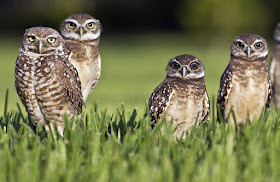 |
| Bat-eared fox |
The bat-eared fox (Otocyon megalotis) lives in eastern and southern Africa, although, interestingly, not in between. They can, for instance, be found in far northern Zambia and Malawi, and in far southern Mozambique, but that's as close as the two populations get. Which, to save you the trouble of getting out a map, is a gap of about 1,000 miles or so. Given their complete lack of contact with one another, it is perhaps unsurprising that the two populations are considered separate subspecies.
Modern genetic analysis has shown that bat-eared foxes probably are real foxes, albeit ones whose ancestors diverged from the line that led to all the other true foxes very early on. It has to be said, though, that that isn't 100% certain, and it's possible that the divergence was so early that they just go at the base of the tree, not closely related to anything.


